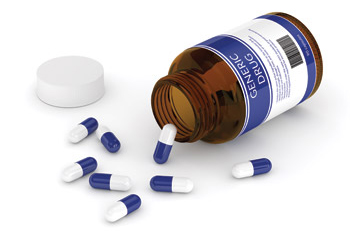Explaining the increase of eosinophilic esophagitis
The prevalence of eosinophilic esophagitis, a disease virtually unknown 25 years ago, has risen dramatically as more endoscopies are done and more early-life exposures occur that can induce the condition.
If you've been seeing more patients with eosinophilic esophagitis (EoE), you're not alone. The allergic inflammatory disease has become much more common in recent years, particularly in North America and Europe, said Fouad J. Moawad, MD, an associate professor of medicine at Scripps Clinic in La Jolla, Calif.
Eosinophilic esophagitis is characterized by symptoms of esophageal dysfunction (e.g., food impaction, dysphagia) and the presence of eosinophils on esophageal biopsy. At Digestive Disease Week, held in May in San Diego, he offered some possible explanations for the disease's increase.

In the 1990s and early 2000s, what was then known as EE was considered a very rare condition, with a prevalence of four to 10 cases per 100,000 persons, said Dr. Moawad. In addition, there were few treatment options. “Steroids and diet were based on small, retrospective studies,” he said. “Certainly no published randomized controlled trials—that didn't come until 2006.”
Endoscopies on these patients uncovered distinct findings and impressive mucosal tears, said Dr. Moawad. “You had rings and furrows that you probably had never seen before, and if you caused a tear just from passage of the scope or from dilation, that's something you would never forget,” he said.
Today, the prevalence of eosinophilic esophagitis is estimated to be 50 to 100 cases per 100,000 persons, and the incidence is about 0.5 to 1 case for every 1,000 persons annually, Dr. Moawad reported. “These numbers are important because this is now approaching what we see for [inflammatory bowel disease].” Certain geographic areas have seen especially marked increases. For example, Hamilton County, Ohio, saw the prevalence of eosinophilic esophagitis increase dramatically from 10 to 43 per 100,000 from 2000 to 2003, he said.
The disease remains an interesting topic for gastroenterologists, as it was featured in five full sessions and more than 50 abstracts at Digestive Disease Week, said Dr. Moawad. “With all that said, EoE is still young. It was virtually unknown 25 years ago,” he said. Dr. Moawad outlined several factors that appear to be contributing to the rise of eosinophilic esophagitis.
Some might suggest a simple explanation: Modern physicians are doing more endoscopies and taking more biopsies. However, multiple studies have found that the number of eosinophilic esophagitis cases has outpaced the increasing number of endoscopies, he noted. “Are we doing more endoscopies and taking more biopsies? Yes. But it does not account for all EoE cases we're seeing,” Dr. Moawad said. “There has to be something else going on.”
Of note, studies have found that some early life exposures are associated with the development of eosinophilic esophagitis, namely early antibiotic exposure, exposure to acid suppressants (e.g., proton-pump inhibitors [PPIs]), and birth via C-section, he said. Of interest, although classic treatment options include swallowed topical steroids and an elimination diet, PPIs have a response rate of 50% to 60%, Dr. Moawad said.
“How is it possible that PPIs contribute to the pathogenesis of EoE? It turns out there's actually a plausible explanation for this,” he said. Pepsin breaks down food proteins in the stomach and becomes inactive when stomach pH is greater than 4.5. If pepsin is inactive, food allergens remain intact and therefore can trigger an immune response, Dr. Moawad noted.
Finally, changes in the esophageal microbiome, which is influenced by diet (fiber and fat) and medications (namely, PPIs), may be contributing to the increase in eosinophilic esophagitis cases, he said. One study found that compared to participants with normal mucosa or gastroesophageal reflux disease, those with eosinophilic esophagitis had a higher bacterial load, according to results published in May 2015 by PLOS One. Bacterial load was increased in patients with eosinophilic esophagitis regardless of treatment status or degree of mucosal eosinophilia compared to the control group, and Haemophilus was significantly increased in untreated versus treated eosinophilic esophagitis patients.
There isn't one simple reason for the increase in eosinophilic esophagitis, Dr. Moawad concluded. “I think we shouldn't look at it as there's one potential explanation,” he said. “We should look at it as there are many factors involved.”





